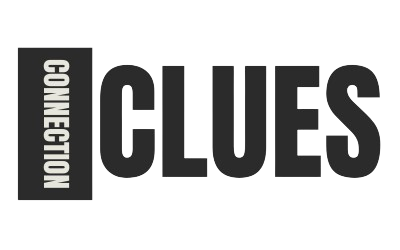In a world full of distractions, competing goals, and rapid change, clarity of vision is more valuable than ever. That’s where The Visioning process comes in. Whether you’re leading a business, launching a startup, or redefining your personal goals, visioning offers a structured way to define your ideal future and align your actions to achieve it.
In this guide, we’ll explore what “The Visioning” is, why it matters, how to do it effectively, and how it can unlock breakthrough results for individuals and organizations alike.
What Is “The Visioning”?
Visioning is a structured process of imagining, defining, and planning a desired future state—be it for a business, career, team, or life path. It goes beyond goal setting by focusing on long-term direction, core values, and emotional connection to your ideal future.
Visioning isn’t just asking “What do I want?”—it’s about answering:
- “Who do I want to become?”
- “What impact do I want to make?”
- “How will success feel and look like in the long term?”
The Purpose of Visioning
The core purpose of The Visioning process is to:
- Clarify direction before setting strategy
- Inspire motivation by anchoring to purpose
- Align teams and stakeholders toward shared goals
- Activate creative thinking for breakthrough innovation
- Reduce distractions by filtering actions through your long-term vision
Whether you’re designing your next 10 years or your next big project, The Visioning helps ensure that every step you take is aligned with your deeper purpose.
Visioning vs. Goal Setting: What’s the Difference?
| Aspect | Visioning | Goal Setting |
| Focus | Future identity and direction | Specific outcomes and milestones |
| Timeframe | Long-term (3–10 years) | Short-to-mid term (weeks to years) |
| Emotion | Deeply emotional and purpose-driven | Often logic- and performance-based |
| Nature | Creative, expansive | Structured, measurable |
| Example | “Be a global leader in ethical fashion” | “Increase Q3 sales by 15%” |
Vision without goals lacks execution; goals without vision lack purpose.
Benefits of The Visioning Process
Clarity of Purpose
You gain a crystal-clear picture of what truly matters and why.
Unified Direction
In business, it aligns employees, leaders, and departments toward one shared future.
Better Decision-Making
Filter every action or opportunity by asking, “Does this align with my vision?”
Motivation and Focus
Having a compelling vision fuels persistence and focus during setbacks.
Strategic Alignment
Marketing, hiring, innovation, and investments become easier to prioritize.
How to Do “The Visioning” Step by Step
Here’s a proven 7-step framework to guide your Visioning process:
Step 1: Create Space
Set aside uninterrupted time in a quiet environment. Visioning requires reflection, not multitasking.
Step 2: Connect with Your Values
Ask: What do I stand for? What are my non-negotiables? Your core values will guide your future vision.
Step 3: Visualize Your Ideal Future
Use vivid detail to imagine your ideal life or business 3–10 years from now. Consider:
- Where are you?
- Who are you with?
- What does your work feel like?
- What impact are you making?
Step 4: Write It Out
Turn your vision into a written statement. Use present tense as if it’s already true.
Example:
“We are a global wellness brand transforming lives through science-backed products and community engagement.”
Step 5: Identify Key Themes
Extract 3–5 major themes or pillars (e.g., innovation, leadership, sustainability).
Step 6: Set Strategic Intentions
Now, translate those themes into long-term strategic areas to guide goal-setting.
Step 7: Share and Revisit
If done for a team or company, share your vision widely and revisit it regularly—monthly, quarterly, or annually.
“The Visioning” in Business: Why It Works
Businesses that use The Visioning approach often outperform their peers in clarity, culture, and resilience. Here’s why:
It Creates Ownership
Employees feel part of something bigger when they understand and contribute to the vision.
Drives Innovation
Visioning encourages bold thinking beyond current limitations.
Guides Brand Identity
From design to messaging, a clear vision drives consistent branding and voice.
Improves Stakeholder Buy-In
Whether investors, partners, or customers—people trust visionary brands.
Tools to Support the Visioning Process
- Vision Boards (physical or digital using Canva or Pinterest)
- Journaling & Mind Mapping Apps (like Notion or XMind)
- Visioning Templates (downloadable PDF planners or worksheets)
- Team Visioning Workshops (facilitated strategy sessions)
- AI-Powered Visualization Tools (like Sora by OpenAI or Midjourney for creating imagery)
Conclusion
The Visioning process is more than a planning tool—it’s a transformational practice that connects your decisions to your deepest purpose. Whether you’re scaling a business, launching a new project, or simply realigning your life, investing in visioning provides the clarity and confidence to move forward with intention.
“When you see it clearly, you can build it confidently.”
FAQs
1. Is visioning just for businesses?
No—The Visioning process works for individuals, teams, organizations, and even families.
2. How long should my vision be?
Your written vision can be as short as a sentence or as long as a page, depending on your purpose. Focus on clarity, not length.
3. Should vision statements be realistic?
Yes—but they should also be bold, inspiring, and a little beyond your current capabilities to stretch your growth.
4. How often should I update my vision?
Review it at least once a year or when major life/business changes occur.
5. What’s the difference between a mission and a vision?
- Mission: What you do right now
- Vision: Where you’re going long-term
Also read: Typical Dog Sitting Rates in 2025: What You Should Expect to Pay or Charge









